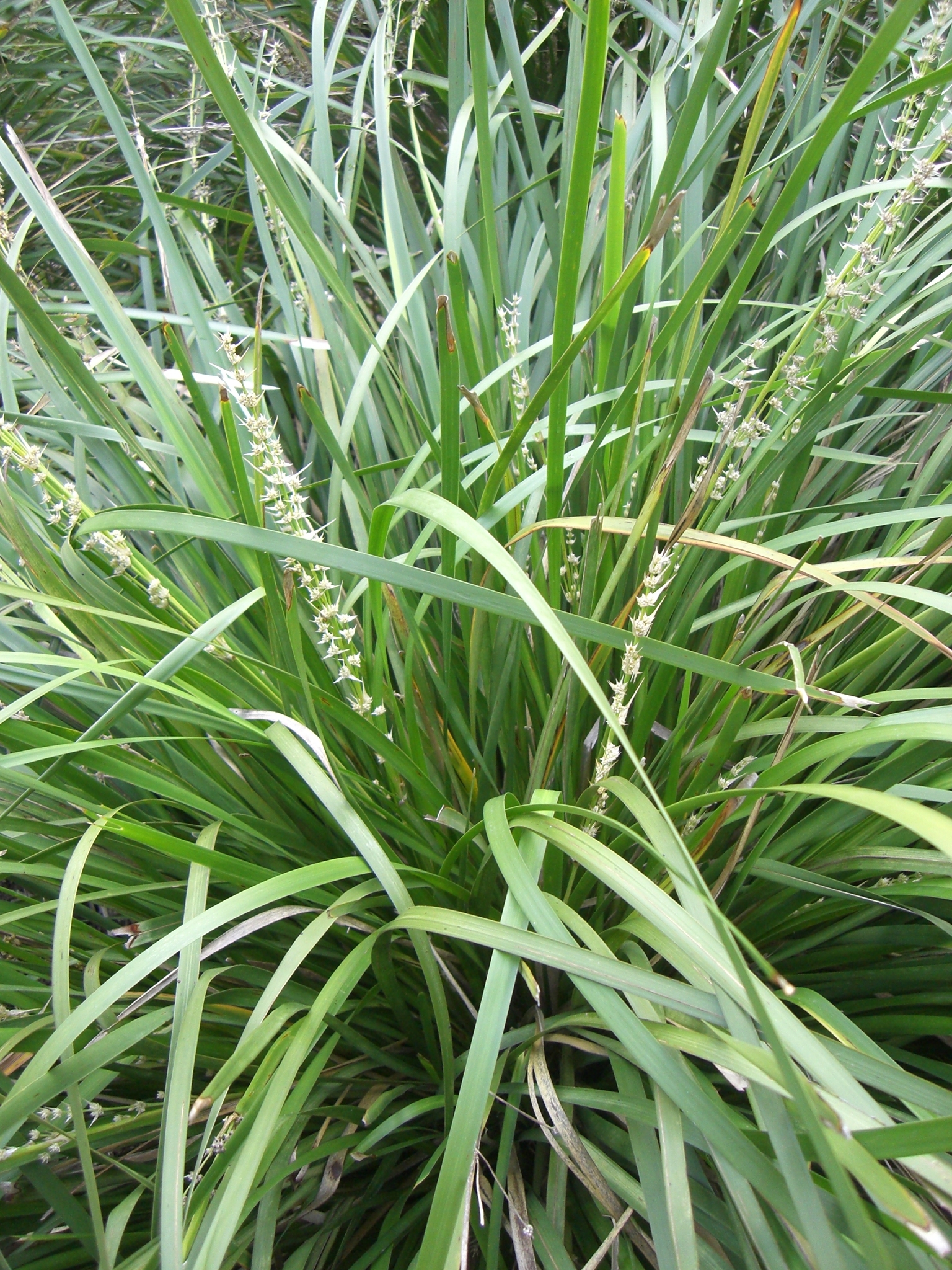
Greek loma – a margin, andros – male, referring to the anthers in the first species described.
Perennial evergreen woody-rhizomatous clump-forming or branching shrubs with fibrous roots. Leaves basal or carried along stems, often 2 ranked, linear, sheathing. Plants unisexual. Flowers radially symmetrical, short-stalked, individual flower stalks articulated. Inflorescence a manyflowered raceme or panicle.Tepals 3+3, 1 nerved, free, not twisting spirally when withered. Stamens 6, attached to tepal bases, reduced to staminodes in female flowers; anthers dehiscing along the side. Ovary superior, 3 lobed, vestigial in male flowers. Fruit a capsule. Seeds rounded, yellow, sometimes fleshy but without appendages.
Grown in full sun to light shade for the striking foliage.
About 50 species mostly endemic to Australia, 2 extending to New Guinea and New Caledonia.
Woody shrub-like clumps; linear leaves; inflorescences with unisexual flowers; capsules with yellow seeds.
Source: (2005). Laxmanniaceae. In: . Horticultural Flora of South-eastern Australia. Volume 5. Flowering plants. Monocotyledons. The identification of garden and cultivated plants. University of New South Wales Press.
